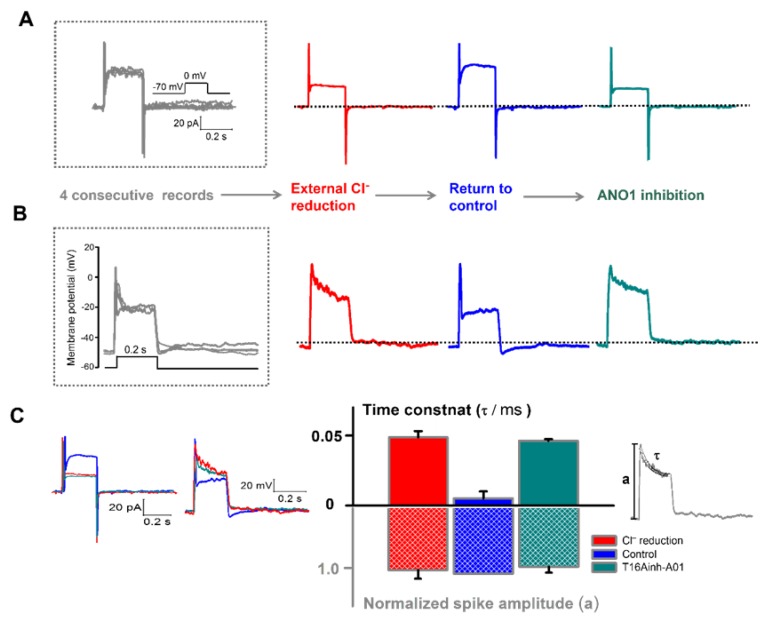Figure 3.
The voltage-dependent component of ANO1 is involved in the rapid decay of the initial phase of the waveform. (A) Four consecutive voltage-clamp recordings (10 mV intervals from −70 mV holding potential for 250 ms) were performed to determine the control condition of the bipolar cells lacking Itail. From the control condition (gray), the responses were detected by changing the extracellular solutions in this order: low Cl−, control, and with T16Ainh-A01. (B) After switching to the current-clamp mode, the control waveforms (gray) and cell membrane potential were detected using the same process. The cells were depolarized by current injection (≈20 pA) from a resting potential of approximately −50 mV. Representative traces are shown in red (low Cl−), blue (control), and dark cyan (T16Ainh-A01). (C) The traces obtained from the two modes are superimposed to compare the differences between the outward current component and the decay of the initial potential phase. The decay time constant τ was obtained from the single exponential fit of the initial phase of the waveform. Each amplitude spike was measured and shown in the inset. The time constant in the decay phase (top row) compared with the normalized spike amplitude (bottom row) was represented by a bar graph for each condition. The results were normalized by setting the maximum value as 1 (n = 10, p < 0.05, ANOVA, τred = 0.048 ± 0.0046 ms, τblu e= 0.0051 ± 0.0049 ms, τdark cyan = 0.046 ± 0.0012 ms; ared = 0.94 ± 0.13, ablue = 1, adark cyan = 0.90 ± 0.89; n = 6, error bars represent S.E.M).

